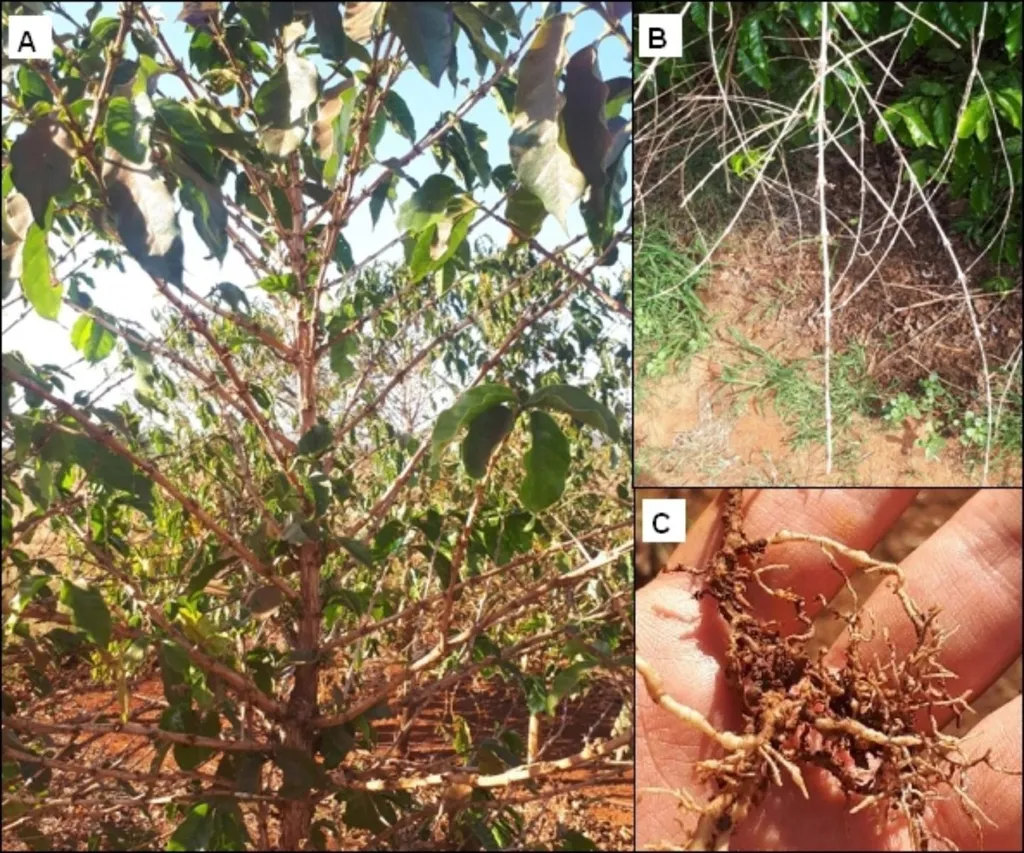In the heart of Brazil, a discovery is brewing that could revolutionize the way we combat one of agriculture’s most persistent foes: the root-knot nematode. A study led by Daniele de Brum from the Department of Plant Pathology at the Universidade Federal de Lavras has uncovered a hidden world of bacteria living within the egg masses of Meloidogyne exigua, a notorious nematode species that wreaks havoc on coffee plants. The findings, published in the Phytobiomes Journal (which translates to the Plant Biomes Journal), offer a promising glimpse into the future of biological control and could have significant commercial impacts for the agricultural sector.
Root-knot nematodes are a global menace, causing billions of dollars in crop losses annually. They invade plant roots, forming unsightly galls that disrupt the plant’s ability to absorb water and nutrients. Traditional control methods have relied heavily on chemical nematicides, but these can be harmful to the environment and human health. De Brum’s research offers a more sustainable alternative.
By sequencing the 16S rRNA gene of bacteria communities associated with M. exigua egg masses, de Brum and her team found significant differences in bacterial composition and diversity between symptomatic and asymptomatic coffee plants. “We were astonished by the stark contrast in bacterial communities,” de Brum said. “It was like comparing a bustling city to a ghost town.”
The study revealed that families like Pseudomonadaceae, Burkholderiaceae, and Flavobacteriaceae were more abundant in egg masses from asymptomatic plants, while families such as Chitinophagaceae, Glycomycetaceae, and Enterococcaceae dominated in symptomatic plants. This differential bacterial community could be the key to understanding and controlling nematode infections.
The practical implications of this research are profound. The team tested the reproduction and infectivity of M. exigua in tomato plants using inocula from both symptomatic and asymptomatic coffee plants. The results were striking: the reproduction index of M. exigua was significantly lower when using inocula from asymptomatic plants, and the root weight of tomato plants was significantly higher. “This suggests that the bacterial communities in asymptomatic plants might be suppressing nematode reproduction,” de Brum explained.
While the infectivity index did not show significant differences, the findings still open the door for developing bionematicides—biological control agents that target nematodes. This could lead to more sustainable and environmentally friendly pest management strategies, benefiting both farmers and consumers.
The research also sheds light on the complex interplay between soil microbial ecology and plant health. Understanding these interactions could pave the way for innovative agricultural practices that harness the power of beneficial microbes to protect crops. “This is just the beginning,” de Brum said. “There’s a whole world of microbes out there that we’re only starting to understand.”
As the agricultural industry grapples with the challenges of climate change, soil degradation, and the need for sustainable practices, de Brum’s research offers a beacon of hope. By delving into the microbial world, we may unlock the secrets to healthier crops, more productive farms, and a more sustainable future. The journey is just beginning, but the potential is immense.

